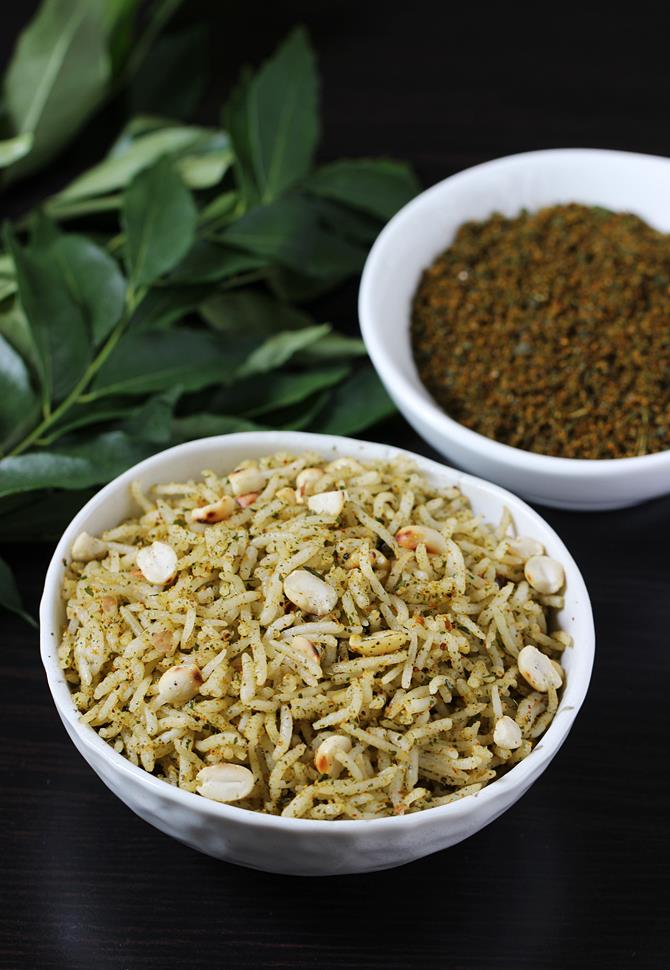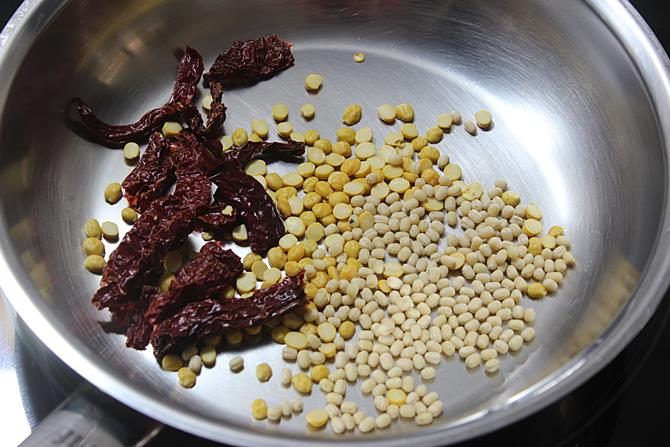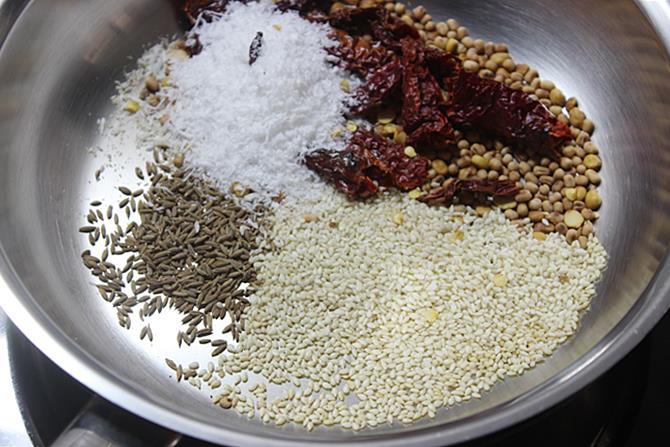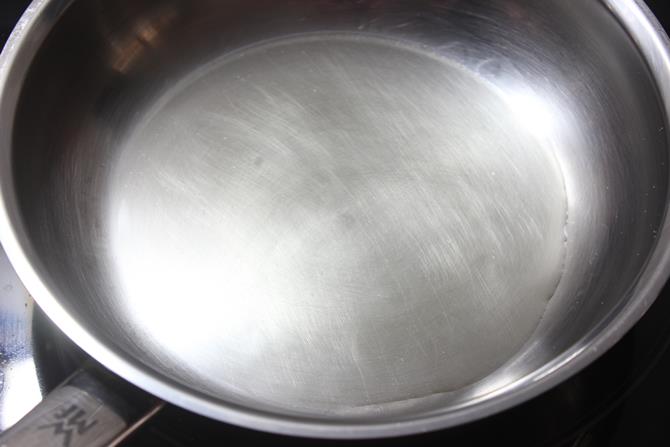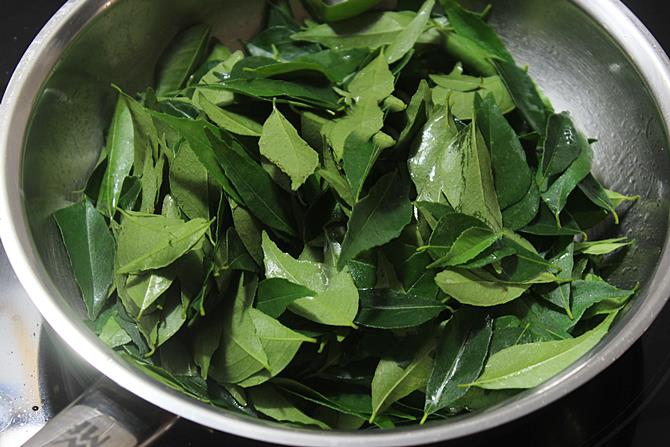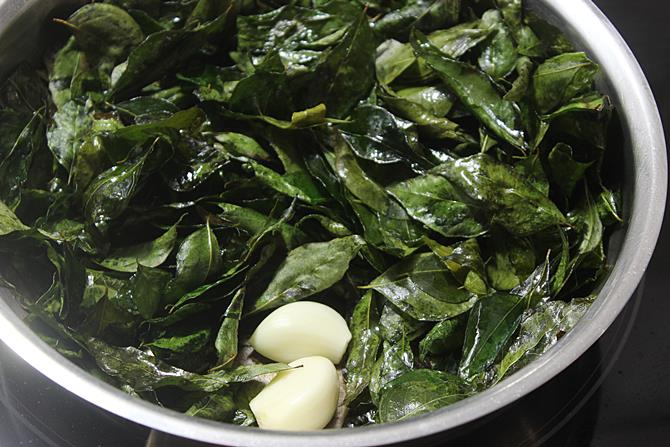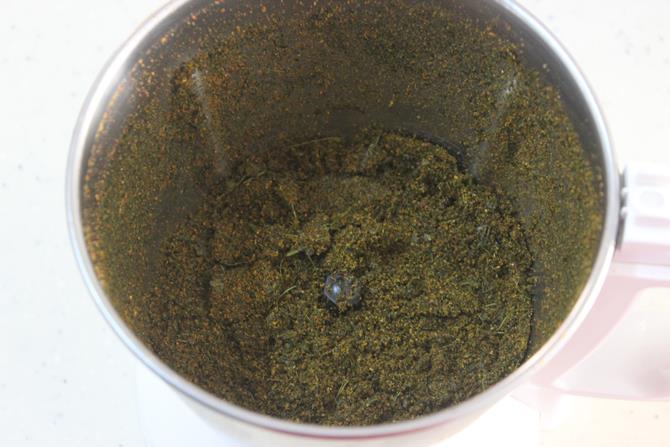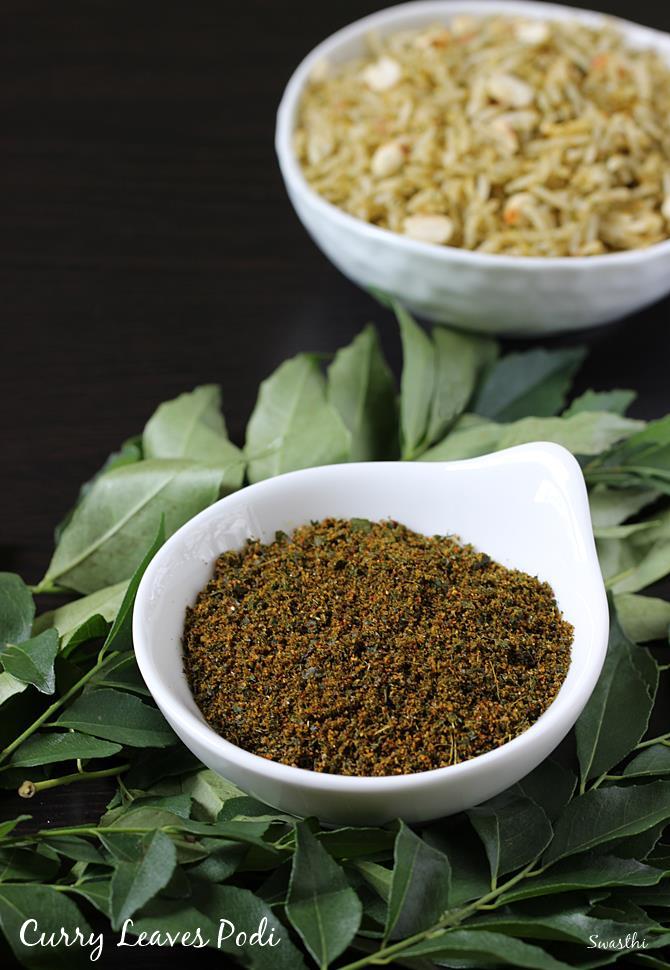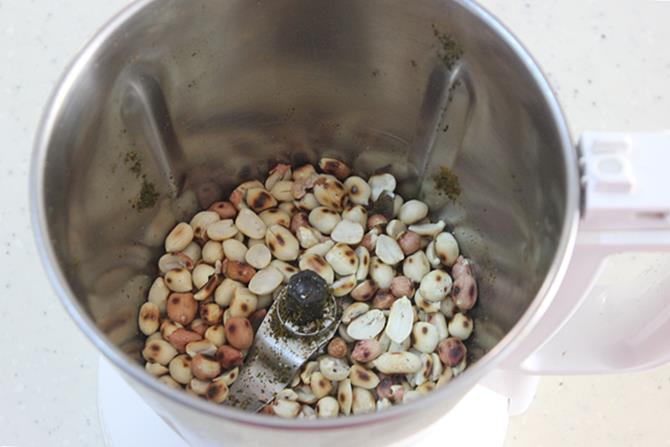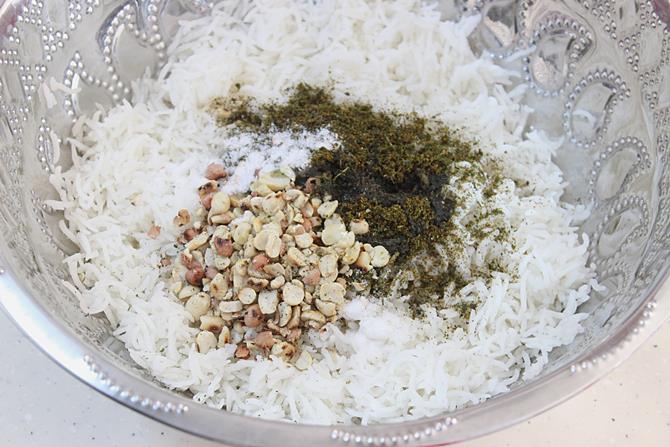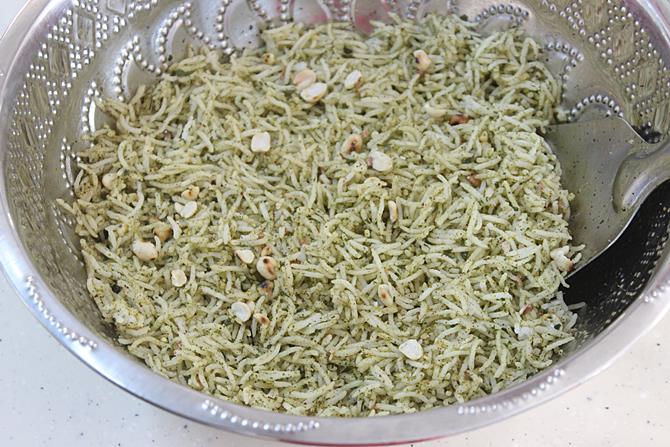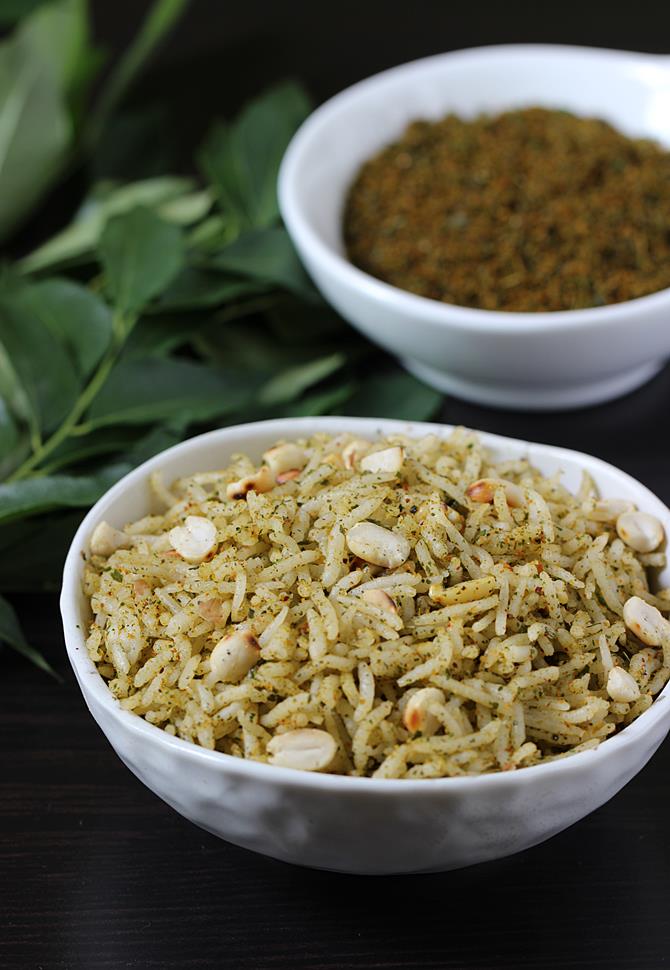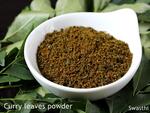A tsp of this powder eaten with rice in the beginning of a meal is said to increase the appetite, digestion and absorption of nutrients in the food. I will try to make a detailed post on the health benefits of curry leaves sometime soon. There may be different ways of making spiced curry leaves powder or curry leaves rice. I am sharing the method I make at home. I usually make this spicy curry leaves podi and stock up in a glass bottle. Use it whenever needed to make the karivepaku rice. Curry leaves podi can also be served with lemon rice, upma, semiya upma, idli, Pongal etc. Adjust the amount of red chilies in the recipe to suit your taste. This karivepaku podi is healthy, delicious and quick to make. It can be a quick fix to dinner as well when you do not have time to make a elaborate meal, just mix it with cooked rice along with oil and roasted peanuts or any other nuts. This recipe is adapted from the vepudu karam recipe on the blog. You may also like the curry leaves chutney. Update: I have been dehydrating the curry leaves for this podi in the oven. It is so much easier and does not need oil too. Also you can store these dehydrated curry leaves for upto a month in a glass jar. You can also powder the curry leaves alone without spices and sprinkle on your veggie stir fry dishes.
How to make curry leaves powder
- Always use mature fresh curry leaves that do not have infestations. Rinse them well under running water or in a large pot filled with water. You can also add a fistful of rock salt to the water and set aside for 10 mins. This helps to get rid of any pesticide residue. Repeat rinse until the leaves are clean.
- Drain them in colander. When the water drains off completely. Spread them on a thick cotton cloth until the moisture dries up completely. I usually dry these leaves in the morning around 10 am and leave it on the dinning table until evening 4.
- On a low flame dry roast dals for 2 mins, then add red chilies. Adjust the amount of red chilies to suit your taste. I used kashmiri red chilies. Roast until the dals turn golden and chilies turn crisp. Keep tossing in between to prevent burning.
- Add cumin/ jeera. Switch off the stove. Add sesame seeds and desiccated coconut. The heat from the hot pan is enough to toast them. If you have dried coconut (copra) use that since it is higher in nutrition than desiccated coconut. You can also skip coconut and sesame seeds. Set these aside to cool.
- To the same pan, add oil and heat it a bit. If you want you can also dehydrate the curry leaves in the oven. Check the recipe card below to get the instructions.
- Add the curry leaves and begin to saute.
- On a low to medium flame, fry them until the leaves turn crisp. Add garlic to this and switch off the stove.
- Cool all the ingredients completely. If you like to add tamarind, you can add a bit of it. I prefer fresh lemon juice for the rice rather than tamarind. Powder them all in a blender jar along with salt. Store it in a air tight glass jar.
how to make curry leaves rice
method 11. Heat oil in a pan,allow mustard to crackle. Add urad dal and peanuts, fry until the peanuts turn golden. Then add 1 sprig curry leaves, red chili and hing. Saute all. Off the stove. Stir in the curry leaves powder as needed. Pour this to the cooled cooked rice. Sprinkle salt. You can also sprinkle some fresh lemon juice if you have not used tamarind. Mix well. Method 2 1. Cook the rice and cool it completely. 2. Dry roast peanuts until they are toasted well. Remove off the skin and coarsely crush or pulse them in a blender jar. 3. Add curry leaves powder, salt, peanuts and oil. 4. Mix them all together. I prefer to use extra virgin olive oil and little fresh lemon juice. Since the oil is not heated in this method, all the nutritional and health qualities of extra virgin olive oil are retained. Add more or less podi to suit your taste. Serve karivepaku podi rice with salad, kosambari or plain yogurt. You can also check this collection of over 70 rice recipes suitable for quick dinner or lunch box.
Recipe card
